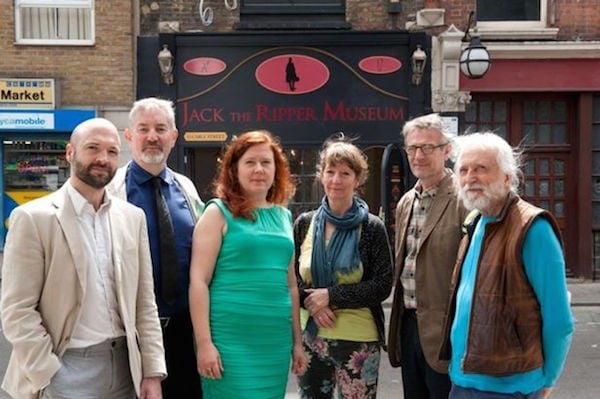Art & Exhibitions
Shock in London as Anticipated Women’s History Museum Becomes Jack the Ripper Tourist Trap
From celebrating women's achievements to glorifying misogyny and violence?
From celebrating women's achievements to glorifying misogyny and violence?
When a museum that was originally planned to be “the first women’s museum in the UK” was unveiled in East London as a space dedicated to the infamous Victorian serial killer Jack the Ripper, local residents thought they were the butt of a “sick joke.”
In the application for the site, sent to the Tower Hamlets council and approved last year, the project was billed as “the only dedicated resource in the East End to women’s history.”
According to the Evening Standard, the dossier to support the proposal for the museum featured pictures of suffragettes and equal-pay campaigners.
But when the scaffolding went down in Cable Street, in preparation for the official opening of the museum next Tuesday, all that locals could see was the ominous silhouette of Jack The Ripper against a pink background, with his name emblazoned in red letters over the entrance.

A group of protesters against the Jack the Ripper Museum, including Jemima Broadbridge and Jenny Boswell-Jones.
Photo: Courtesy of Glenn Copus via The Mirror.
“It’s like some sort of sick joke,” Julian Cole, a film-maker and local resident, told the Guardian. “You propose a museum celebrating the achievements of women and then it turns out to be a museum celebrating London’s most notorious murderer of women. I don’t have any objections to a Jack the Ripper museum, it’s a commercial enterprise like the London Dungeon and Jack the Ripper walking tours, but what I’m miffed about is the fact that we seem to have been completely deceived, in a way that is rather unpleasant.”
“The history of the East End is not just about misogyny: it’s about the Battle of Cable Street, it’s about Oscar Wilde and The Picture of Dorian Grey, among other things,” Jemima Broadbridge, a government press officer, told the ES.
Local resident Jenni Boswell-Jones also mentioned the strong historical inaccuracies of the project. “I don’t think anybody in the area is against enterprise and somebody doing something new and exciting, but Jack the Ripper has nothing to do with Cable Street. Cable Street was the home of the anti-fascist march in 1936, that’s what it’s known for,” she told the Guardian. “The Ripper murders took place on Batty Street and the Spitalfields area,” she clarified.

Mark Palmer-Edgecumbe, the man behind the project and former Google diversity chief.
Photo: via The Guardian.
Meanwhile, Mark Palmer-Edgecumbe, the man behind the project and former Google diversity chief, tried to spin the change of subject in a more flattering way, saying, “We did plan to do a museum about social history of women but as the project developed we decided a more interesting angle was from the perspective of the victims of Jack the Ripper,” he told the ES.
“It is absolutely not celebrating the crime of Jack the Ripper but looking at why and how the women got in that situation in the first place,” he said, adding insult to injury.
Residents are now asking the council to find out whether they can stop the museum from opening, and it seems like not all might be lost. As spokesperson from the council said: “The council is aware of the Jack the Ripper imagery and is investigating the extent to which unauthorized works may have been carried out at the premises.”